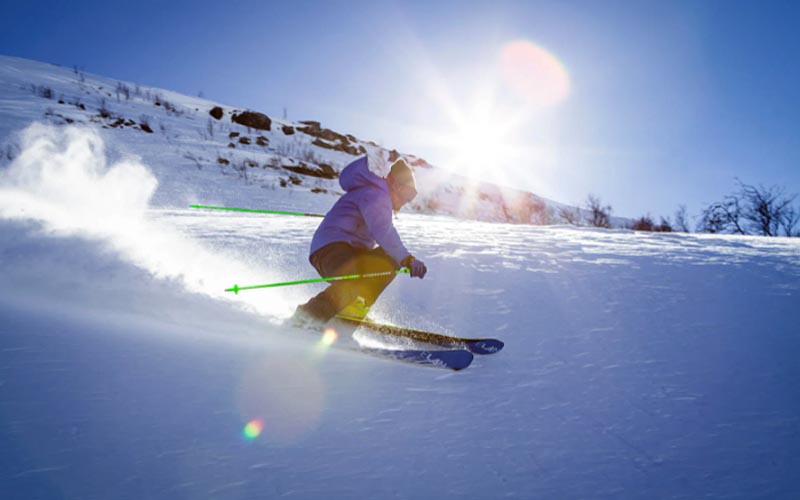Like most winter sports, skiing is fun and exhilarating but also dangerous. No matter how experienced or cautious you are, a skiing injury is always just one mistake away. While downhill ski injuries are more common than cross country ones, you can get hurt in either sport. In this article, we’re going to look at the most common skiing injuries, how they happen, and how to avoid them.
What are the most common skiing injuries?
Any part of your body can get injured when you’re skiing. However, because of the body mechanics involved with the sport, some parts of you are much more prone to injury than others. Let’s examine the most vulnerable parts of your body when it comes to skiing.
Head Injuries
Head injuries are some of the most common and dangerous injuries in skiing. While they can occur in cross country skiing, they’re much more common with downhill skiers. Head injures are almost exclusively the result of falling and hitting your head or colliding with a tree or fellow skier.
Concussions and contusions are the most likely head injuries that you’ll suffer. A concussion happens from a blow to the head, while a contusion is when your head suffers an open cut. Both injuries are serious, and you should immediately seek immediate medical attention for them.
How to avoid
The best way to avoid head injuries is to wear a helmet and goggles. By wearing protective gear, you significantly reduce the risk of a head injury. You can also reduce the risk of injury by not attempting to do things outside of your ability. At Tennessee Orthopaedic Alliance, we realize that the only way to get better at something is to test your limits. However, you should always be as safe as possible when doing so.
Knee injuries
Also, in running for most common skiing injuries are knee injuries. Knee injuries account for 40% of all skiing injuries, making them the most common injury in downhill skiing. There are a variety of knee injuries that are common with skiers, and they vary in degree of severeness and occurrence.
- ACL tears or sprains
- Knee ligament injuries
- Torn meniscus
- Fractured patella
While knee injuries are the most common leg injuries sustained by skiers, plenty of other parts of the leg can get injured. Sprained ankles, broken bones, and torn ligaments or muscles are common occurrences in skiing.
How to avoid
The best way to avoid painful and costly knee injuries is to condition and strengthen your legs. Exercising and working out regularly, your knees and lower body will be stronger and more resistant to injury. You should start a regular workout regime at least six weeks before the skiing season.
It’s also a good idea to wear knee braces if you’re worried about sustaining a knee injury. By staying fit and wearing the proper gear, you can significantly reduce the risk of knee injuries. However, no matter how good of shape you’re in or how great your protective equipment is, some knee injuries are simply unavoidable. Anytime you decide to strap on your skis and fly down a hill, you’re putting yourself at risk.
Rotator Cuff Strain
Rotator cuff strains and sprains are surprisingly common with skiers, especially cross country skiers. The repetitive motion of propelling yourself forward, mainly using your upper body, puts a considerable strain on your arms, shoulders, back, and core.
While any part of the body can get injured from the repetitive motion of skiing, 39% of all upper extremity injuries are to the rotator cuff. Rotator cuff strains can also occur when a skier is bracing themself for a fall or from colliding with another object.
How to avoid
As with knee injuries, the best way to avoid a strained or torn rotator cuff is to strengthen and condition that area of the body. You should also make sure to do plenty of stretching before you start skiing. Finally, using proper form is essential with downhill and cross country skiing. An excellent way to get hurt is by not knowing what you’re doing and flailing recklessly about it.
You can avoid most rotator cuff and upper extremity injuries through strength and conditioning, stretching, and practicing.
Skiiers Thumb
With a name like ‘skiers thumb,’ this injury had to be on the list. Skiers Thumb refers to tearing the ulnar collateral ligament in your hand, or UCL. It’s referred to as skiers thumb because it’s an injury often sustained by falling on your outstretched hand while holding a pole. Skiers are very vulnerable to tearing their UCL because it’s instinctive to put your hands out and soften your fall. If you’re still holding on to your pole while doing this, there’s a good chance you could tear your UCL.
How to avoid
To avoid tearing your UCL or Skier’s Thumb, you should drop your poles if you start falling.
Spinal Injuries
Any high-speed or high-contact sport puts you at risk for a spinal injury, and skiing is no different. Spinal injuries are hazardous whether you collide with another object or land on your head when performing a trick. Spinal injuries consistently correlate with skiers going faster or trying to land bigger tricks than the rest of the pack.
How to avoid
The best way to avoid a detrimental spinal injury is to not ski above your level or try things that you can’t do. Most ski injuries happen because of negligence, carelessness, recklessness, and lack of preparation. If you take the time to condition your body, wear protective gear, and act responsibly, you’re much less likely to sustain a skiing injury.
Contact Tennessee Orthopaedic Alliance
If you have sustained a skiing injury or injury of any sort, contact the orthopedic professionals at Tennessee Orthopaedic Alliance. No matter what type of injury you suffered or how it happened, we’re here to get you back on the slopes as quickly as possible. We specialize in each of the injuries discussed in this article and much more. Don’t let your quality of life suffer because of an unfortunate accident. Contact us today to set up a consultation and recovery plan!




